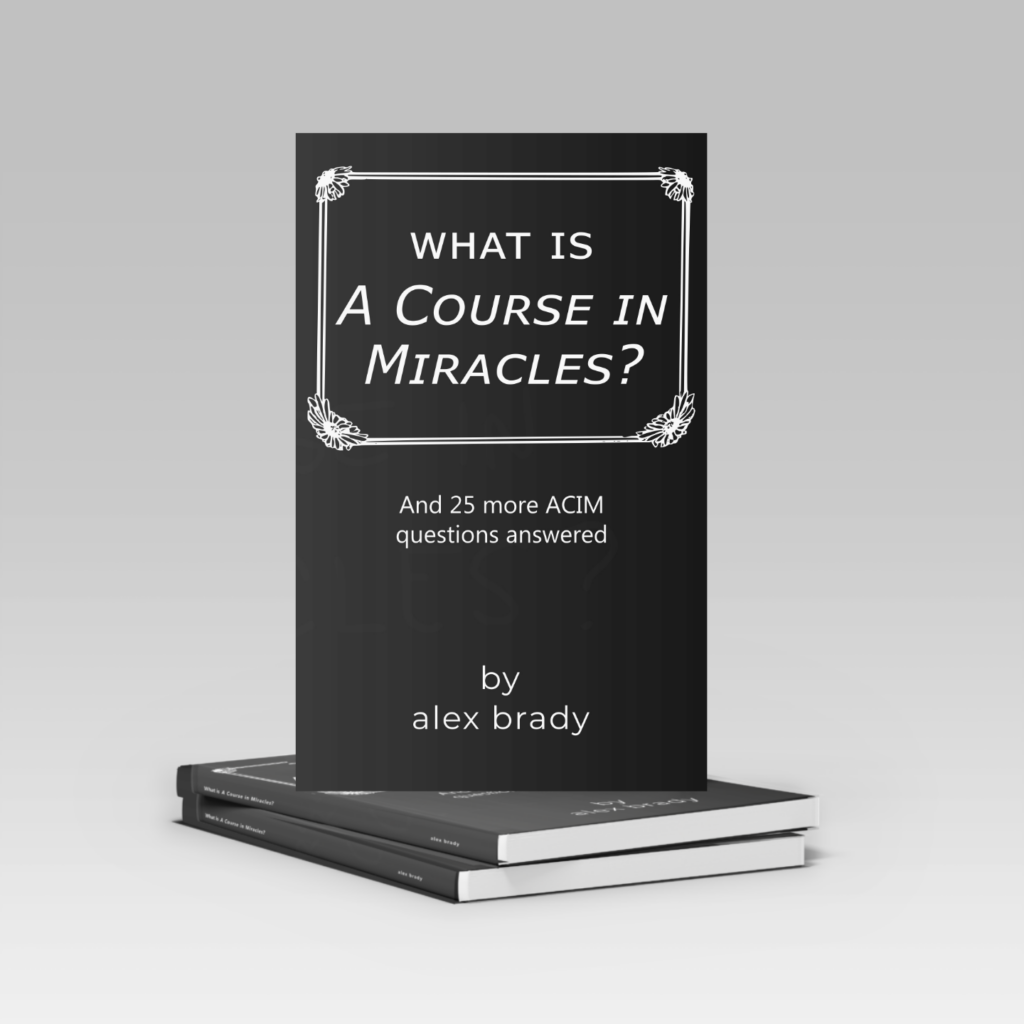Forgiveness
Forgiveness is a major theme in A Course in Miracles. Notably, A Course in Miracles makes a stand in how the author intends the word to be understood. Specifically, previous meanings of the word “Forgiveness” are brought to the reader’s attention, then placed down in favor of a new way to understand the word “Forgiveness.”
How the we’ve historically defined forgiveness:
A conscious, deliberate decision to release feelings of resentment, grief, or vengeance toward something you perceive as having harmed you regardless of whether it is deserved. Pardon; leniency; letting-off.
How A Course in Miracles defines forgiveness:
A recognition that what you thought your brother did not occur. It does not pardon sins; it sees there was no sin. Forgiveness merely sees its falsity and therefore lets it go. Forgiveness is still and quietly does nothing. It merely looks and waits, and judges not.
These two definitions of forgiveness are diametrically opposed in how they perceive wrong-doing. With the first, a wrong-doing is seen and pardoned. With the second, there is nothing to pardon; no wrong-doing has occurred. The illusion wrong-doing is a misperception.
ACIM refers to the first definition given as false forgiveness.
As one is learning the thought system of A Course in Miracles, it is likely much of the forgiveness practices will begin with attempts at the first definition. It is important to recognize this is happening, but equally helpful to forgive in however is possible to the learner – either definition. As we see the wide-spread benefits to relieving ourselves of resentments and grievances, the second definition will become more natural and desirable.
Again, forgiveness from the Course’s perspective is not at the level of interpersonal behavior. That may be a tough concept to grasp at first. Our exercises with forgiveness may start human-to-human because the Course will meet you where you think you are (i.e. ego-identified), but the teaching goes deeper.
An intentional practice with the first definition in daily life will help a student learn to appreciate the benefit of bringing the second definition into their belief system.
The second definition is the goal to be attained – the sooner, the better.
Illusions are always illusions of differences. Where do all these differences come from? Certainly they seem to be in the world outside. Yet it is surely the mind that judges what the eyes behold. It is the mind that interprets the eyes’ messages and gives them “meaning.” And this meaning does not exist in the world outside at all. What is seen as “reality” is simply what the mind prefers. Its hierarchy of values is projected outward, and it sends the body’s eyes to find it. The body’s eyes will never see except through differences. Yet it is not the messages they bring on which perception rests. Only the mind evaluates their messages, and so only the mind is responsible for seeing. It alone decides whether what is seen is real or illusory, desirable or undesirable, pleasurable or painful.
A Course in Miracles

